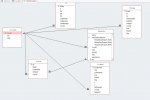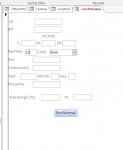Sharkman1885
Registered User.
- Local time
- Today, 13:37
- Joined
- Dec 5, 2017
- Messages
- 85
Hey all,
I have a database composed of 5 tables (ID, Location, Biology, Other, Crocodile) as well as a join table called Lookup. The tables are self explanatory for the info in them. The crocodile table has each individual animal(as an auto number) and its sex. ID table includes markings tags ect. each crocodile can have a one to many relationship to each table and I have already made a select query and form that allows me to search the database, which works perfectly.
My issue is when it comes to updating. I am unsure how to go about making updates to the tables. For instance if an animal that has not been tagged is caught then I want to be able to add a whole new animal with the various measurements and notations. If a previous animal is handled I want to be able to add the new data to that animal. I have a form and subform setup for the various tables and I made update queries for each subform but have not run them yet as I am not confident with my coding. as an example this is my code for updating via the biological info subform:
each table has its own primary key and also the crocodile number and a date(not sure if date is needed)
I can provide my database if needed
Thanks guys
I have a database composed of 5 tables (ID, Location, Biology, Other, Crocodile) as well as a join table called Lookup. The tables are self explanatory for the info in them. The crocodile table has each individual animal(as an auto number) and its sex. ID table includes markings tags ect. each crocodile can have a one to many relationship to each table and I have already made a select query and form that allows me to search the database, which works perfectly.
My issue is when it comes to updating. I am unsure how to go about making updates to the tables. For instance if an animal that has not been tagged is caught then I want to be able to add a whole new animal with the various measurements and notations. If a previous animal is handled I want to be able to add the new data to that animal. I have a form and subform setup for the various tables and I made update queries for each subform but have not run them yet as I am not confident with my coding. as an example this is my code for updating via the biological info subform:
Code:
INSERT INTO Biology
SELECT TL AS TL, SV AS SV, Weight AS Weight, TailGirth AS TailGirth, HeadLength AS HeadLength, Weight AS Weight
FROM [Biological Information];each table has its own primary key and also the crocodile number and a date(not sure if date is needed)
I can provide my database if needed
Thanks guys


